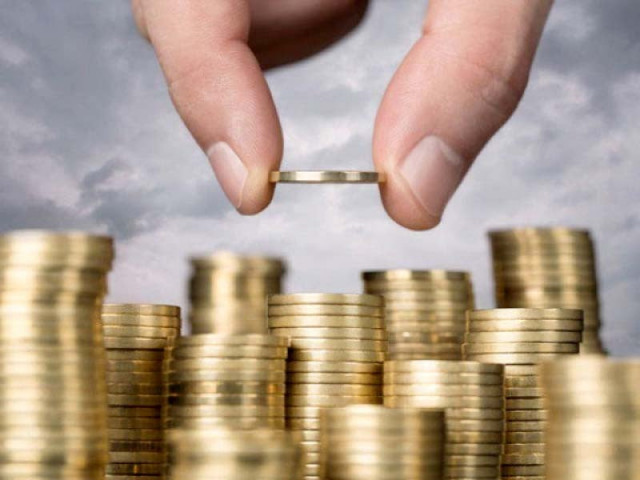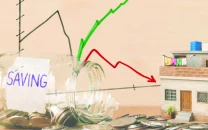Alarming Rs2.7tr hike in July debt
SBP data shows total public debt of Rs50.5 trillion now equals 3/4th of nation’s economy

In an alarming development, public debt in July increased by Rs2.7 trillion – at an average of Rs88 billion a day – almost entirely because of the government’s revaluation of external debt due to 17% currency depreciation in a single month.
With the fresh addition of Rs2.7 trillion in the month of July, the total debt, that is the direct responsibility of the federal government, has shot up to a new record of Rs50.5 trillion, according to figures released by the State Bank of Pakistan (SBP) on Tuesday.
The total public debt of Rs50.5 trillion now equals three-fourth of the nation’s economy and is eating up 42% of the federal budget.
“While reflecting poorly on the performance of the Pakistan Muslim League-Nawaz (PML-N) led coalition government, the US dollar saw a new height of Rs239.71 before it started recovering”.
In its latest debt bulletin, the SBP stated that the average exchange rate on the last day of July 2022 was Rs239.71, showing a depreciation of Rs35.34, compared to exchange rate on the last day of June.
External debt increased at an alarming pace of nearly 16% a month to Rs19.4 trillion in July, reflecting a net increase of Rs2.6 trillion largely due to currency depreciation.
In the previous fiscal year, an addition of Rs9.3 trillion was made to the country’s external debt, however, data shows that the current government has managed to pile up 29% of last year’s debt in a single month.
Showing some improvement, the rupee shed its weight and closed at nearly Rs222 to a dollar on Tuesday.
The direct consequence of mounting debt is a huge increase in the cost of debt servicing. Total debt servicing, which was Rs4.6 trillion at the end of fiscal year 2021, jumped to Rs5.5 trillion in the last fiscal year.
After the revival of the IMF bailout package last week, Pakistan is on the path of having taken gross $40 billion in foreign loans in the current fiscal year. The devastation caused by the floods will add much more to Pakistan’s already bloated public debt records.
Pakistan’s total debt and liabilities skyrocketed to Rs59.7 trillion as the nation added Rs12 trillion, or one-fourth of its total debt incurred in the past 74 years, in its diamond jubilee year.
The increase in public debt will put also burden the already budgeted debt servicing cost of nearly Rs4 trillion – bringing total spending to all time high – a factor that may compel the IMF to ask Pakistan to trigger its contingency plan.
According to a report released by the IMF, under the contingency plan, Pakistan has promised the IMF that it will impose sales tax on fuel and withdraw tax exemptions availed by exporters and sugary drink manufacturers. The plan also includes slashing the federal development budget by Rs150 billion and provincial development financing by Rs384 billion.
During their previous five-year stints in power, PML-N added nearly Rs10 trillion while coalition member Pakistan People’s Party (PPP) added Rs8 trillion to the debt burden.
The federal government’s total domestic debt remained largely unchanged at Rs31.1 trillion, as only Rs92 billion were added in domestic debt, according to the SBP.
However, there was structural change within the domestic debt. The size of the long-term domestic debt declined by Rs418 billion to Rs23.8 trillion. Compared to this, the size of the short-term domestic debt increased from Rs6.8 trillion to Rs7.3 trillion.
The increase of Rs502 billion in the short-term debt instrument indicated that banks were not willing to lend money on long-term basis, anticipating a hike in interest rates.
Before the floods hit, the central bank and IMF had predicted an average inflation rate of up to 20%. Due to flood damage, however, the finance ministry is likely to increase this to 26%.
Published in The Express Tribune, September 7th, 2022.
Like Business on Facebook, follow @TribuneBiz on Twitter to stay informed and join in the conversation.



















COMMENTS
Comments are moderated and generally will be posted if they are on-topic and not abusive.
For more information, please see our Comments FAQ